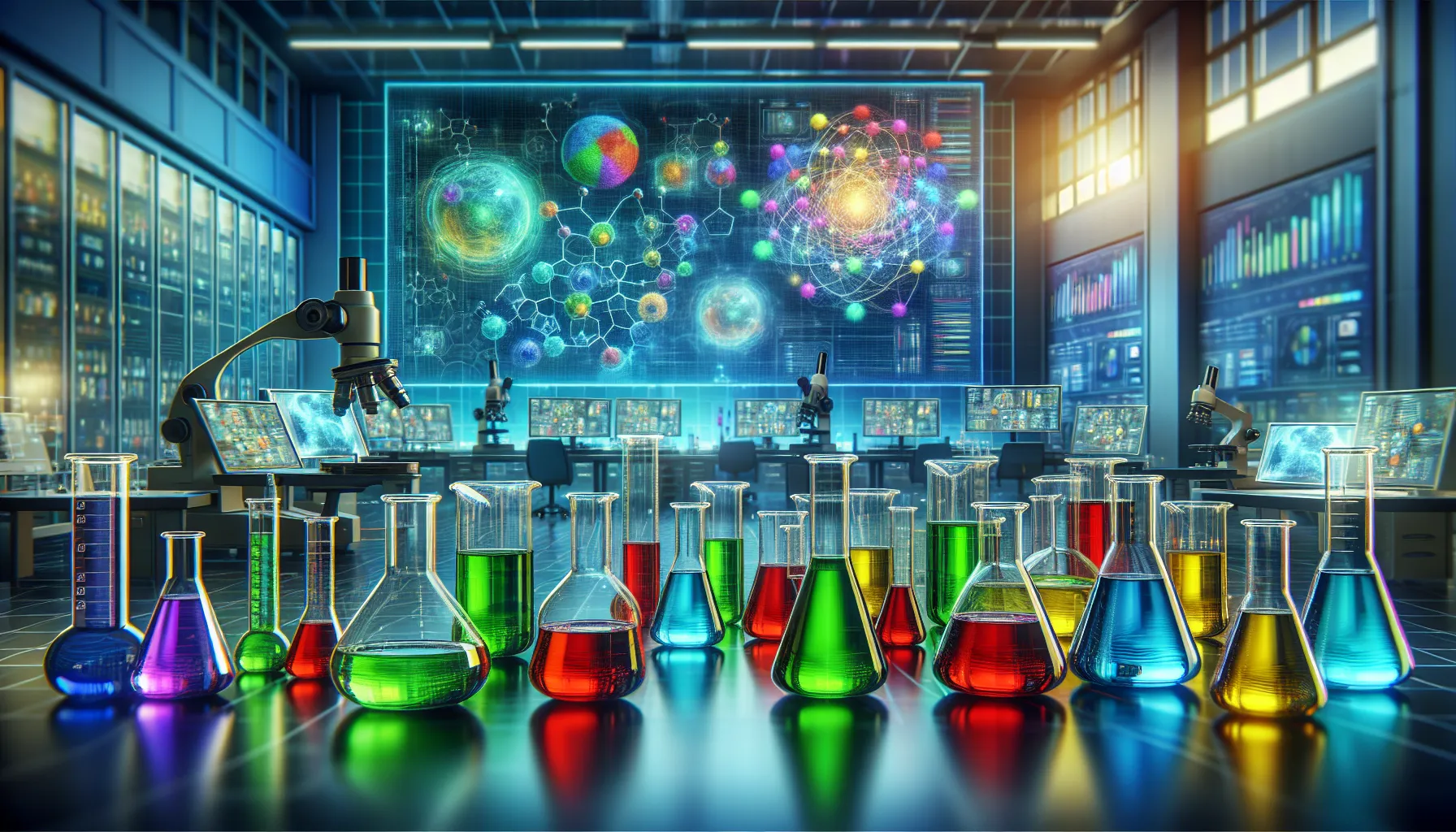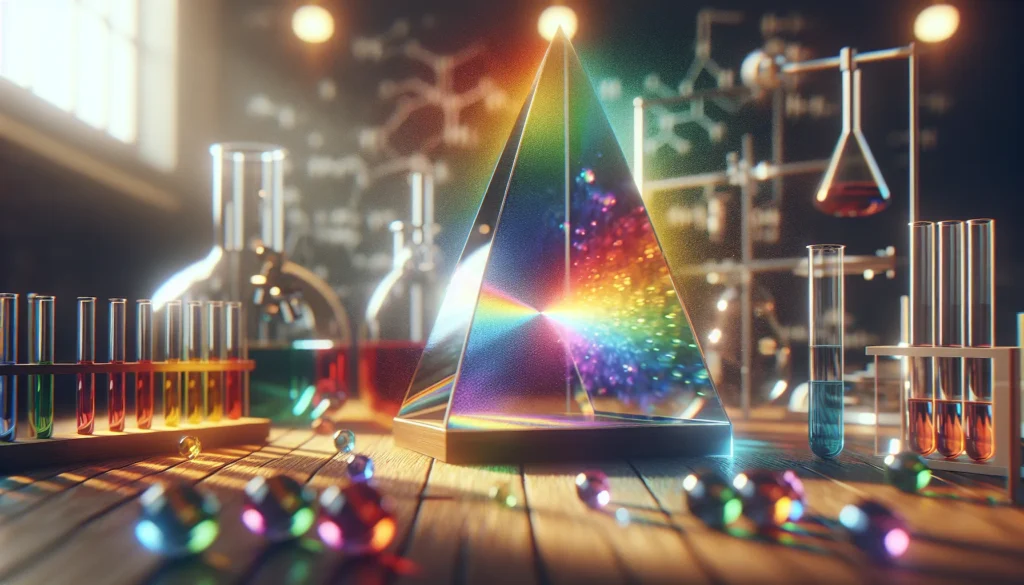Key Takeaways
- Science is represented by a spectrum of colors, symbolizing its interdisciplinary nature and connection to numerous fields like biology, physics, and chemistry.
- Colors play a crucial role in scientific studies by fostering intuitive connections—green for life, blue for vastness, red for energy, and yellow for curiosity.
- Scientific visualization heavily relies on colors, using techniques like heatmaps, false-color imaging, and spectrums to enhance data analysis and communication.
- Historical breakthroughs, such as Newton’s prism experiments and spectroscopy, highlight the pivotal role of color in advancing scientific knowledge.
- Modern technology leverages color innovations, from fluorescent microscopy to 3D color mapping, enriching the tools available for research and discovery.
- Cultural and social contexts influence the perception and use of color in science, emphasizing the need for universal and inclusive color representations.
When you think of science, does a specific color come to mind? For me, it’s a kaleidoscope of hues—each representing curiosity, discovery, and the endless pursuit of knowledge. From the vibrant green of nature’s biology to the deep black of the cosmos, science feels like a canvas painted with the shades of wonder.
Colors have a way of sparking emotions and ideas, and they’re everywhere in science. Whether it’s the fiery red of a chemical reaction or the cool blue of a glacier, each shade tells its own story. It makes me wonder—what if science itself had a color? Would it be one, or would it be all of them combined?
Exploring The Concept Of “What Color Is Science”
Science connects with every color in meaningful ways. Each discipline carries its palette, reflecting its nature and essence. Physics often symbolizes blue, echoing the sky and the expansive universe it studies. Chemistry could evoke fiery orange for its transformative reactions and energy. These hues foster a connection between science and human perception.
Some argue that no single color can represent science. This perspective highlights the interdisciplinary nature of the subject, interweaving biology’s greens, space exploration’s blacks, and computational science’s silver tones. Considering these, science seems to transcend a singular identity.
Many relate science to a spectrum because it mirrors light’s diversity. The spectrum analogy aligns with the idea that science combines numerous fields, much like a prism dispersing white light into distinct bands of color. By recognizing this, we grasp how science embodies complexity and unity.
The Intersection Of Science And Color

Science and color share an intrinsic connection, intertwining symbolism and function. Exploring this relationship reveals how colors shape perceptions and enhance understanding in scientific disciplines.
The Symbolism Of Colors In Scientific Studies
Colors embody symbolism across scientific studies, reflecting specific ideas, fields, and phenomena. Green often represents life and ecology, grounding its association with biology. Blue evokes calm and vastness, making it a natural fit for oceanography and physics. Red symbolizes energy and passion, frequently linked to research in heat or chemistry. Yellow captures curiosity and optimism, aligning with innovation and exploration in observational studies. These color representations help communicate complex concepts and foster intuitive connections.
How Color Influences Scientific Visualization
Colors enhance scientific visualization, transforming data into accessible insights. Multicolor spectrums in graphs simplify comparisons of variables, helping decode trends at a glance. Heatmaps utilize gradients, such as red to blue, to convey temperature changes or intensity levels in climate models and biochemical interactions. False-color imaging in fields like astronomy assigns visible hues to invisible wavelengths, revealing patterns in cosmic radiation or galaxy formation. Accurate color usage ensures readability, improving comprehension and collaboration in research outputs.
Historical Perspectives On Science And Color

Color has long played a role in the progression of scientific understanding. Its influence is evident in key discoveries and the development of specialized fields that rely heavily on color analysis.
Notable Discoveries Linked With Color
Some scientific breakthroughs hinge on the study of color. For example, Newton’s experiments with prisms in the 17th century revealed that white light contains all colors, forming the foundation of optics. In the 19th century, Bunsen and Kirchhoff developed spectroscopy, using light spectra to identify elements like helium and cesium. Similarly, the Doppler effect, noted through shifts in light wavelengths, led to groundbreaking insights into the universe’s expansion.
Color also guided biology and medicine. In the late 19th century, Gram staining differentiated bacterial cells, advancing microbiology. In the mid-20th century, fluorescence microscopy enhanced the visualization of cell structures, aiding cellular biology. These discoveries illustrate how colors bridge observation and deduction in science.
The Evolution Of Color-Related Science Fields
Fields reliant on color analysis evolved to solve unique challenges. Spectroscopy emerged as a tool for identifying chemical compositions through light-emission patterns. This developed further into astrophysics, where spectroscopic techniques analyze distant stars’ chemical makeup based on color shifts.
In chemistry, pH indicators, like litmus and phenolphthalein, made acidity visible through distinct color changes. Ecology adopted satellite imaging to monitor vegetation health via green-spectrum analysis. Meanwhile, climatology applied false-color satellite imagery to detect weather patterns and temperature variances.
Even art and science combined in conservation fields, where ultraviolet imaging reveals pigments and restorations in historical paintings. These developments reflect how applied color study impacts diverse scientific and interdisciplinary domains.
The Role Of Color In Modern Science

Colors enhance clarity and understanding in scientific research and discovery. From visualizing data to leveraging advanced technology, their role in modern science continues to grow.
Color In Data Representation And Analysis
Color improves the clarity of complex datasets. In heatmaps, gradient colors highlight temperature ranges or population densities. Multicolor spectrums in graphs distinguish variables like rainfall patterns across regions. In astronomy, false-color imaging assigns visible hues to invisible wavelengths, revealing cosmic structures like nebulas or distant stars. These techniques make intricate data patterns more interpretable, fostering quick insights and better decision-making.
Advancements In Color Technology For Science
Innovations in color technology have transformed scientific tools. Imaging spectrometers now capture data across hundreds of spectral bands, enabling precise material identification in fields like geology and agriculture. Advanced microscopy uses fluorescent dyes to highlight cellular components, aiding in diagnostic research. Meanwhile, 3D color mapping in environmental sciences tracks changes in ecosystems by modeling terrain and vegetation over time. By integrating cutting-edge technology, color continues to expand the scope of scientific exploration.
Cultural And Social Implications Of Science And Color
Colors influence how people connect with science, shaping its perception and communication. Cultural and social contexts add deeper layers to these associations, affecting how scientific knowledge is represented and interpreted.
Perception Of Science Through A Color Lens
I’ve noticed that colors often define how science is perceived across fields. Blue is frequently linked to trust and innovation, making it a common choice in scientific branding and educational materials. Green, symbolizing growth and life, dominates environmental sciences and agriculture. These color associations strengthen familiarity and help create intuitive connections for audiences.
In fields like physics or astronomy, darker hues such as black and deep purple evoke the mystery of the universe. Bright hues, like red or yellow, are often tied to more dynamic branches like chemistry and energy studies. By seeing science through a color lens, people can better relate to its concepts and find patterns that simplify complex ideas.
Impact Of Cultural Differences On Scientific Illustrations
Cultural differences affect the way scientists and institutions use colors to illustrate data. While red indicates danger or errors in Western contexts, many Asian cultures associate it with prosperity and celebration. This contrast can influence how scientific reports or graphs are interpreted in global research collaboration.
For example, color-coded weather maps may use widely-accepted hues for temperature gradients, yet regional preferences can skew public understanding. To improve accessibility, I’ve seen increased efforts to adopt universal color schemes that minimize misinterpretation across cultural boundaries. Initiatives like these enhance communication and ensure science reaches a global audience effectively.
Conclusion
Science, much like color, is a beautiful blend of complexity and harmony. It thrives on diversity, with each field contributing its unique shade to the bigger picture. From the vibrant hues of biology to the cosmic depths of astronomy, science reflects the endless curiosity that drives us to explore and understand.
Colors don’t just make science visually striking—they help us connect, interpret, and communicate ideas in ways words alone often can’t. Whether through data visualizations or symbolic meanings, color has become an essential tool in making science more accessible and impactful.
Ultimately, science isn’t confined to a single color. It’s a spectrum, a kaleidoscope of ideas and discoveries that mirrors the infinite possibilities of the universe. And just like a prism dispersing light, science continues to reveal its wonders, one vibrant hue at a time.
Frequently Asked Questions
What does the article say about the relationship between colors and science?
The article explains that colors play a significant role in representing scientific disciplines, evoking emotions, and enhancing understanding. Each color symbolizes specific aspects of science, such as green for biology, blue for physics, and red for energy. It highlights the interdisciplinary nature of science through color symbolism.
How are colors used in scientific visualization?
Colors help transform complex data into accessible insights. Techniques like heatmaps, multicolor spectrums, and false-color imaging in astronomy use colors to compare variables, visualize patterns, and reveal invisible phenomena, improving readability and data analysis.
What role do colors play in historical scientific discoveries?
The article discusses how breakthroughs like Newton’s prism experiments and spectroscopy development by Bunsen and Kirchhoff advanced fields like optics and chemistry. These discoveries emphasize color’s significant role in scientific progress.
How do colors influence modern scientific research?
Colors enhance clarity and interpretation of complex datasets in modern research. Innovations such as imaging spectrometers, heatmaps, and microscopy facilitate precise data analysis and expand scientific exploration across fields like diagnostics and material identification.
What is the cultural impact of colors on science communication?
Colors shape public perception of science by invoking familiar associations, such as blue for trust and green for growth. However, cultural differences in color meanings can affect global collaborations, prompting efforts to develop more universal color schemes for effective communication.
Why is science compared to a spectrum in the article?
The article compares science to a spectrum to emphasize its complexity and unity. Just as a prism disperses white light into a colorful spectrum, science reflects diversity across its many disciplines, each represented by distinct colors.

